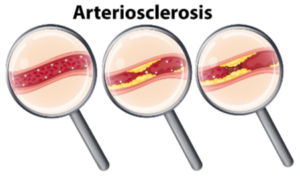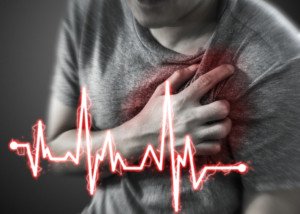An echocardiogram is an ultrasound of the heart that, unlike a catheter angiogram (the gold standard for showing plaque buildup in arteries), is non-invasive and carries no risks.
The CT angiogram (CAT scan with contrast dye) shows soft-plaque buildup, but it also emits radiation.
A CT scan without contrast dye (the type used in identifying a person’s coronary calcium score) shows only hard-plaque buildup.
Hard or calcified plaque is stable and not prone to fragmenting or rupturing and forming a clot in a coronary artery.
But if the buildup of this plaque is great enough, it will cause narrowing of the coronary arteries, leading to angina.
Soft plaque is unstable; it can rupture and plug up a coronary artery in seconds, causing a heart attack.
Though calcium score correlates to the likelihood of varying levels of coronary artery disease, the score does not definitively mean that your arteries are clogged up with soft plaque.
Can an echocardiogram actually show soft plaque?
“No, an echocardiogram is an ultrasound that looks at the heart muscle and heart valves,” says Dr. Lowell Steen, MD, Interventional Cardiologist at Loyola University Medical Center, Director of the Interventional Cardiology Fellowship Training Program, and Medical Advisor to 120/Life, a functional beverage with a blend of six natural ingredients that promote normal blood pressure.
“It cannot look at coronary artery plaque. However, it can indirectly tell if someone is suffering from blockages or has had a silent heart attack. If the heart looks weak, blockages are often the reason.”
When my mother had an echocardiogram following chest pain and shortness of breath, the cardiologist said that it was “abnormal,” and that he didn’t feel good about her going home (she wanted to just go home and forget it all).
He did not say, “It shows a blockage,” or, “It shows that your arteries are clogged.”
An echocardiogram is much better at showing the following:
• Aneurysm
• Enlarged cardiac muscle
• Chamber abnormalities
• Valve problems
• Ejection fraction
• Inflammation
The doctor didn’t want to make a move on my mother based on just the echocardiogram.
But it was a first step; due to the abnormal finding, he wanted her to undergo the invasive catheter angiogram.
In my mother’s case, it was not determined she was having or had had a recent heart attack, despite her symptoms.
And her cardiac troponin result was in the indeterminate range.
But things were serious enough that he wanted the catheter angiogram.
The catheter angiogram, as mentioned, gives doctors a very clear picture of where blockages are, how much and whether or not bypass surgery is called for, vs. a stent placement.
It was impossible for the echocardiogram to reveal that my mother had five severely blocked coronary arteries, requiring a quintuple bypass surgery.
 Dr. Steen’s clinical expertise includes angioplasty, chest pain, coronary artery disease, heart attack, high blood pressure, valve disease, and vascular disease and intervention. 120life.com
Dr. Steen’s clinical expertise includes angioplasty, chest pain, coronary artery disease, heart attack, high blood pressure, valve disease, and vascular disease and intervention. 120life.com
 Lorra Garrick has been covering medical, fitness and cybersecurity topics for many years, having written thousands of articles for print magazines and websites, including as a ghostwriter. She’s also a former ACE-certified personal trainer.
Lorra Garrick has been covering medical, fitness and cybersecurity topics for many years, having written thousands of articles for print magazines and websites, including as a ghostwriter. She’s also a former ACE-certified personal trainer.
.
Top image: vecteezy.com
Source:
hopkinsmedicine.org/healthlibrary/conditions/cardiovascular_diseases/echocardiography_echo_85,P00212/
Stabbing Chest Pain when Lying on Left Side: Heart or Muscle?
Chest Pain with Hoarse Voice: May Be Cancer or Aortic Aneurysm



























